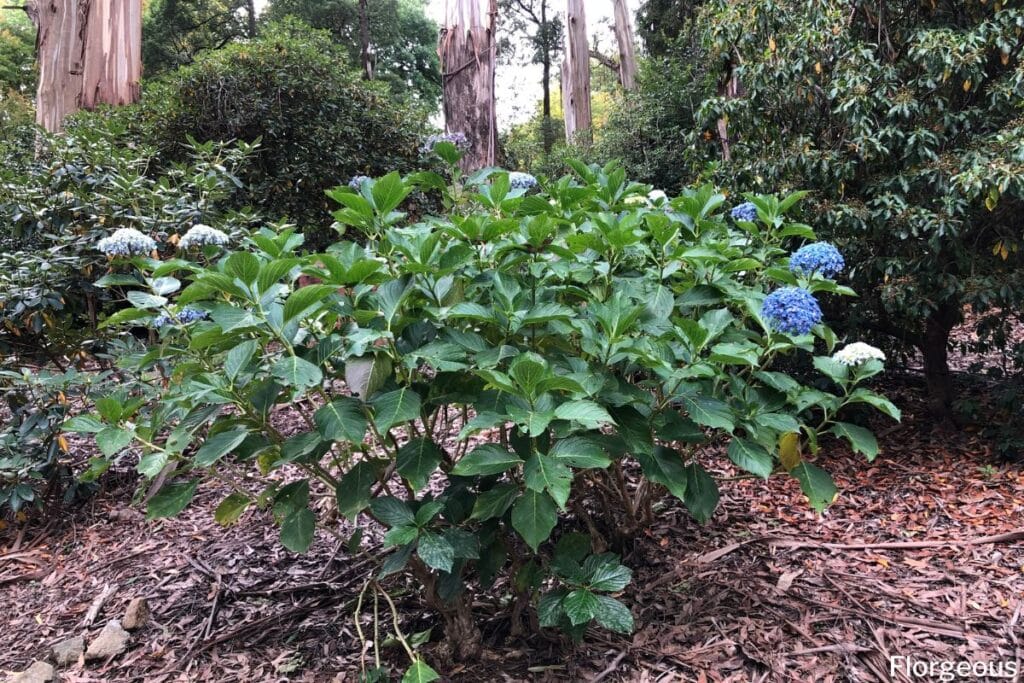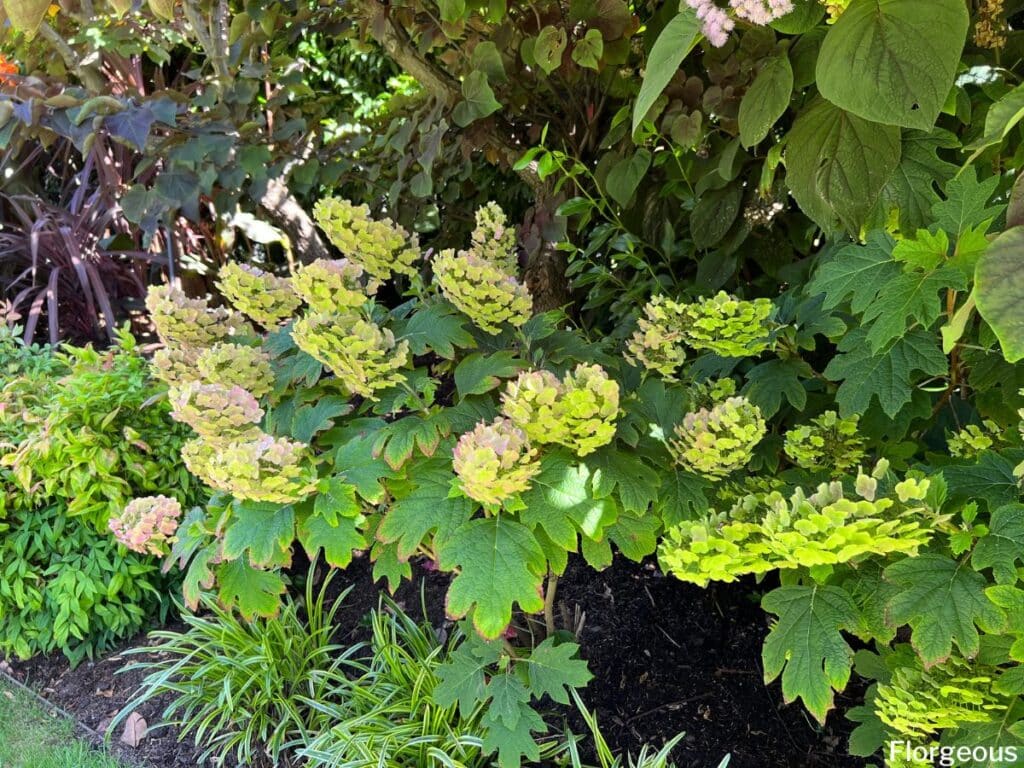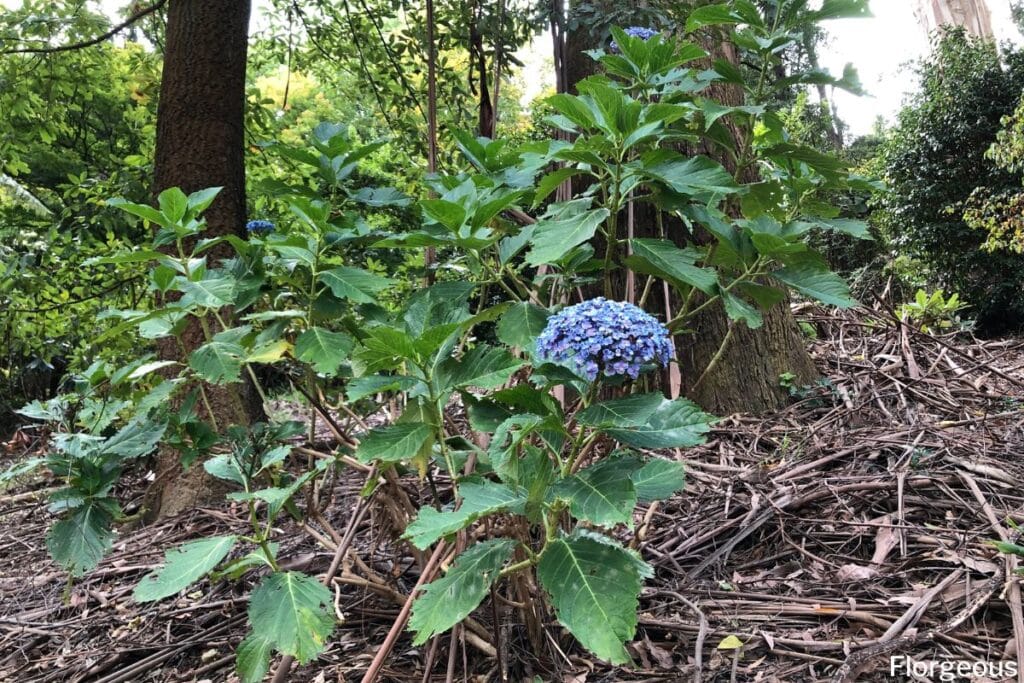A staple in many backyard gardens, Hydrangeas do not miss a season in the list of many plant and gardening catalogs.
Almost every year, a new cultivar is released because of its enormous popularity and function in landscaping and cut-flower industries.
The Hydrangea is a genus of over 75 plant species. They are native to temperate regions of Asia and America. Countries like China, Korea, and Japan have the highest species diversity of this plant, classified from shrubs to small trees and deciduous to evergreens.
Hydrangeas grow quickly and can reach a height of 15ft, while some species are known to be climbers. They bloom prolifically at the onset of spring and could last up to late fall. The flowers are remarkable, almost a showstopper, in flaunting their vibrant or pastel shades of blue, pink, and white.
Although the plant may appear high-maintenance because of its elegance, growing it is quite the opposite. It is very hardy. As long as given the right conditions, it can fill up any space as quickly as one summer.
A secret to thoroughly enjoying the spectacular beauty of Hydrangeas is providing good quality soil. But what does it mean to have good soil?
Why Soil Matters?
We may sometimes think of the soil as dirt, but this is not the case for plants. Unlike humans, plants cannot go to a convenience store to buy a drink or food when they become thirsty and hungry. Hunting as done by wild animals is inevitably not their thing. They cannot simply move from one place to another. To continue living, they rely on the soil to provide water and nutrients for them.
To grow hydrangeas, you need good soil. Hydrangeas thrive well when the ground can give enough nutrients and adequate moisture. They need it to be just the right kind to hold their roots firmly while still giving ample space for growth. Otherwise, Hydrangea plants will not be as healthy and lively because they are not in their best condition.
There is more about soil than meets the eyes. In fact, one will need basic knowledge and experience to tell which is good and not for a particular plant. Maintaining healthy soil is another matter. But do not be intimidated because this article will be a good help.
Ideal Soil Texture for Hydrangeas
Soil texture refers to the proportion of sand, silt, and clay particles that is present as a mineral component of the soil.
Depending on the abundant particle, soil texture influences how workable a soil is, the amount of water the soil can hold, and the movement of water through the soil.
The characteristics of each particle are as follows:
| Soil Particle | Characteristics |
| Sand soil | Size ranges from 2.0mm to 0.05mm in diameter; loose; coarse; formed from disintegration of rock; no plasticity |
| Silt soil | Size ranges from 0.05mm to 0.002mm in diameter; feels like dry flour; dust-like that can be easily transported by wind, water, and ice; helps bind sand and clay; has little or no plasticity |
| Clay soil | Size is less than 0.002mm in diameter; extremely fine particles; high plasticity |
There are 12 soil textural classes as identified by the United States Department of Agriculture (USDA). They are sand, loamy sand, sandy loam, loam, silt loam, silt, sandy clay loam, silty clay loam, clay loam, sandy clay, silty clay, and clay. They can be represented using the soil texture triangle.
Sandy soil allows water to infiltrate easily so they dry too quickly. They are also found to be low in nutrients and they hastily leach out any applied fertilizers. Thus, they are a bit problematic as Hydrangeas love fertile and consistently moist soil.
Clayey soil on the other hand is too heavy and dense for Hydrangeas. It will be hard for the roots to penetrate the soil and establish themselves. Too much clay also tends to hold water for extended periods which causes root rot.
Loam soil is comprised of almost equal parts of sand and silt with little proportion of clay. The percentage is similar to 40-40-20% of sand, silt, and clay respectively. This is ideal for many garden plants because it holds a considerable amount of water but also drains well. Lastly, It is friable that allows the entry of air into the soil until it reaches the roots.
Hydrangeas are not as picky as other plants. As long as their specific needs are met, they have no problems growing in a varying range of soil types and conditions. But if you have to pick the best, consider planting them in loam soil with high organic matter.

Hydrangea Soil Nutrients
Hydrangeas grow quickly and bloom prolifically. Hence, they will need a lot of nutrients primarily Nitrogen, Phosphorus, and Potassium. These nutrients are collected by the roots from the soil.
There are many ways nutrients get into the soil naturally including the nitrogen cycle, weathering of rocks, activities of soil microorganisms, and the decomposition of organic materials. Out of these processes, the last is the best and easiest way you can do to improve your soil.
Fully-decomposed animal wastes and dead plants add up to the organic matter content of the soil. Organic matter is a reservoir of nutrients that can be released into the soil. The higher amount of organic matter present in the soil means there will be more nutrients available for the plants.
Composting is an activity that creates organic matter. It hastens the decomposition process by intentionally mixing various organic materials such as grass clippings, animal feces, food scraps, or anything that is carbon-based. Earthworms, fungi, and bacteria can also be added to aid the process. The finished product of composting is called compost.
Compost can be incorporated into the surface of the soil to nourish. It gives a healthier approach than the use of synthetic fertilizers because it does not kill beneficial microorganisms.
You can feed Hydrangeas with compost every near end of winter or early spring. Look for the dripline of your shrub and spread compost around it.

Hydrangeas and its Magic Blooms
There is no plant more stunning than Hydrangeas when they are in full bloom. Their flowers vary from cool blues to pretty pinks and now the striking colors of new varieties.
Did you know that when you plant Hydrangeas, you can magically change its color using acidic soil and alkaline soil?
Blue Hydrangeas are the most common. Believe it or not, you can make the color blue more vibrant when you make the soil more acidic.
A pinkish-red bloom on the other hand is produced by the same plant when the soil is at an alkaline level. Now you realize that it is not magic at all but real science stuff.
Soil pH is a scale from 1.0-14.0 that measures how acidic or alkaline the soil is. A reading of less than 7.0 considers the soil acidic while a scale of above 7.0 is alkaline or basic. A flat 7.0 is considered neutral. The measurements are done using a test kit for quick qualitative analysis or pH meters that give actual numerical values.
What happens when soil becomes acidic or basic? The answer lies in soil chemistry — the chemical elements found in the soil, particularly aluminum.
The availability of aluminum ions (Al3+) within the soil is the culprit in making hydrangeas bluish-lavender and pinkish-red. Under acidic conditions, aluminum ions are easily uptake by plant roots and taken up to the flowers making them blue.
But with increasing pH, these aluminum ions combine with other elements such as hydroxyl ions (OH-) that are abundant to form aluminum hydroxide Al(OH)3. Such chemicals precipitate and cannot be absorbed by the plants; thus, losing their blue color.
Although it is possible to change colors by altering the soil pH, it does not happen in an instant. It takes one or two growing seasons to see the desired changes.
Some species and varieties of hydrangeas also differ in responses depending on how they can absorb these elements well. Hydrangeas that produce white flowers are exceptions because the colors are not affected by changes in the soil pH.
How to adjust soil pH for Hydrangeas?
There are many materials that you can use to lower or raise soil pH. The addition of sulfur-containing acidifiers at a rate specified at the package helps lower pH and turn Hydrangeas flowers blue. Sphagnum peat moss, pine needles, pine barks, compost, and coffee grounds also acidify the soil when used as mulch.
To turn the flowers pink, the uptake of Aluminum must be prevented by increasing soil pH or immobilizing aluminum ions. The phosphorus in some fertilizers when applied binds with Aluminum to form insoluble compounds that cannot be absorbed by the plants. The addition of lime also increases soil pH.
Although Hydrangeas can thrive in both slightly acidic and slightly alkaline soils, there’s a limit to what it can tolerate. A soil that is too acidic or too basic will certainly produce an aesthetically pleasing flower color but at the compromise of the plant’s health.
Finally, when choosing border hydrangea companion plants, make sure these companions also have similar soil requirements as hydrangeas.
FAQs
Can I use potting soil for Hydrangeas?
Yes. You can use a good quality, well-draining, and moist organic potting soil for Hydrangea bushes grown in pots, containers, and planters.
Are Hydrangeas better in pots or ground?
They do have extensive root systems that can freely grow when planted directly on ground rather than in pots. The potting soil also dries quickly and needs to be watered more frequently than on ground.
How long do Hydrangeas last?
Hydrangeas are long-live shrubs that can last up to 50 years if well taken care of.
Is vinegar good for Hydrangeas?
Vinegar is an acid. You can spray around a weak solution of vinegar to help lower soil pH but too much of it is detrimental for the plants.
Learn more:







